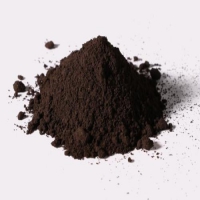Professional industry ceramic supplier, silicon nitride, silicon carbide, aluminum nitride and any other kinds of ceramics.
Is boron a metal?
Boron powder is not a metal, but boron is a solid non-metal because it does not have the general characteristics of a metal. Boron is the only non-metallic element with less than 4 electrons in the outermost layer. This element has both amorphous and crystalline forms. The former is brown-black to black powder, while the latter is black-black to silver gray with metallic luster. Its hardness is similar to diamond. Amorphous boron slowly oxidizes in the air at room temperature and ignites spontaneously at about 800°C. Boron and hydrochloric acid or hydrofluoric acid do not work even if they boil for a long time.
Boron can be slowly corroded and oxidized by a mixture of concentrated nitric acid, sodium dichromate and sulfuric acid. Hydrogen peroxide and ammonium persulfate will also slowly oxidize crystalline boron. Boron reacts violently with sulfur at about 600°C to form a mixture of boron sulfide. When boron is heated above 1000°C in nitrogen or ammonia, boron nitride is formed. At 1800-2000°C, boron and hydrogen do not react, while boron and silicon react at 2000°C or higher to form silicon boride. At high temperatures, boron reacts with many metals and metal oxides to form metal borides.

Boron characteristics
Elemental boron is a black or dark brown powder. When it is oxidized in the air, it can prevent the internal boron from continuing to oxidize due to the formation of a boron trioxide film. It reacts with fluorine at room temperature and will not be corroded by hydrochloric acid and hydrofluoric acid aqueous solutions. Boron is insoluble in water, while boron powder is soluble in boiling nitric acid and sulfuric acid and most molten metals such as copper, iron, manganese, aluminum and calcium. Amorphous boron is chemically active, and powder and air can form explosive mixtures.
Boron is a weak electrical conductor at room temperature and a good electrical conductor at high temperatures. Elemental boron has a variety of allotropes, amorphous boron is brown powder, and crystalline boron is gray-black. The hardness of boron is similar to that of diamond, and it has high electrical resistance, but its electrical conductivity increases with temperature. Crystalline boron is more inert, while amorphous boron is more reactive. There are 14 isotopes in boron, of which only two are stable. Boron mainly exists in the form of boric acid and borate in nature.
Overview of amorphous boron powder
This means that the ancient Arabs already knew that borax had the ability to melt metal oxides and could be used as a flux in soldering. Boron has the largest volumetric heat, and its weight is second only to beryllium. Only soluble in nitric acid, insoluble in water. Amorphous boron is chemically active. Powder and air can form explosive mixtures. Amorphous boron can be obtained by reducing boric anhydride with magnesium. boron. Used in solid ramjets and smokeless clean propellants.
Amorphous boron powder MF: B; molecular weight: 10.81; melting point: 2300℃±2℃; sublimation temperature: 2550℃; relative density: 2.34-2.37; solubility: insoluble in water, hydrochloric acid, ethanol and ether, easy to decompose in cold solution It becomes hydrogen gas and is oxidized to boric acid by concentrated sulfuric acid and nitric acid.
The quality of amorphous boron powder is stable and reliable. This product can be stored for a long time. According to user requirements, products with different particle sizes can be customized.
Application of boron powder
Boron is a necessary condition for the formation of ribonucleic acid, and ribonucleic acid is an important part of life. James Stephenson, a postdoctoral fellow at the NASA Institute of Astrobiology at the University of Hawaii, said: “Bronze may be important to the origin of life on Earth because it stabilizes the nucleic acid, an important part of ribonucleic acid. In the early days of life, ribonucleic acid Considered to be the forerunner of DNA information."
Boron is a widely used chemical raw material mineral, mainly used in the production of borax, boric acid and boron compounds as well as elemental boron. It is also used in metallurgy, building materials, machinery, electrical, chemical, light wool, nuclear industry, pharmaceuticals, agriculture and other sectors. Boron powder is considered an important raw material and can be used as a compound or as an additional material for alloys.
Boron can be used as a gas scavenger for smelting special alloy steels and steel scavengers, in the electronics industry for igniting tubes, control rods, rocket reactors and rocket high-energy fuels; as an important raw material for the manufacture of high-purity boron halide. Boron powder is the raw material for preparing various borides. It can replace and save a lot of valuable metals that lack olefins; boron and its compounds can also be used as catalysts for organic chemical reactions.
Boron powder price
The price of amorphous boron powder varies randomly with production costs, transportation costs, international conditions, exchange rates, and the relationship between supply and demand in the amorphous boron powder market. Tanki New Materials Co., Ltd. aims to help all industries and chemical wholesalers find high-quality, low-cost nanomaterials and chemicals by providing a full set of customized services. If you are looking for amorphous boron powder material, please feel free to contact to get the latest price of amorphous boron powder.
Suppliers of boron powder
As a global supplier of boron powder,Tanki New Materials Co., Ltd has extensive experience in advanced, engineered material properties, applications and cost-effective manufacturing. The company has successfully developed a series of powdered materials (including boron carbide, aluminum carbide, titanium carbide, etc.), high-purity targets, functional ceramics and structural devices, and provides OEM services.
| Technical Parameter of Amorphous Boron B powder | ||||||||
| Chemical Composition | B | P | S | Si | Fe | Mg | O | C |
| Test Result (%) | 95 | 0.05 | 0.02 | 0.11 | 0.15 | 0.21 | 0.15 | 0.17 |
